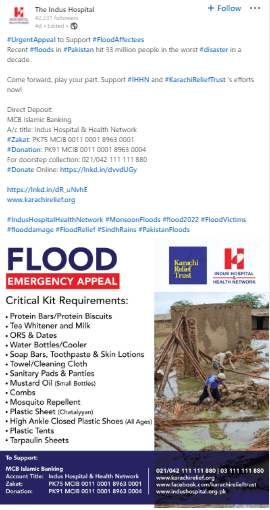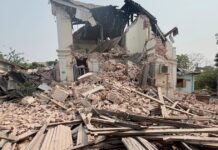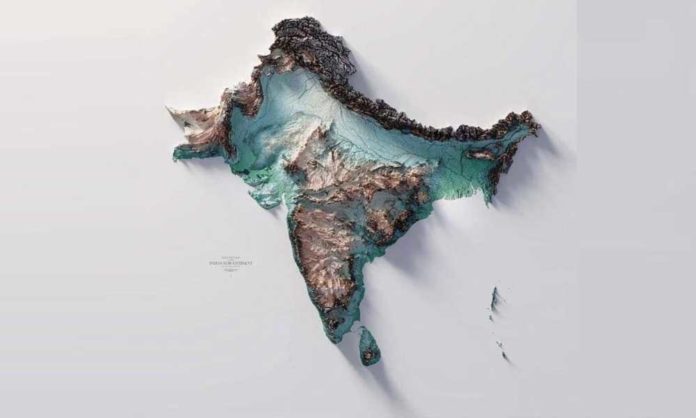This is a topographic map of the subcontinent showing elevation.
What this shows is landscape erosion from flooding over millions of years and the subduction of the Subcontinental plate under the Asian continental plate (the reason for the Himalayas) has created the largest floodplain in the world. Despite contributing less than 1% of carbon emissions causing climate disintegration, Pakistan is still amongst the top 10 countries most vulnerable to climate change. Subsequently, flooding WILL become more frequent and much more deadly.
Pakistan has 7,253 glaciers; the highest number outside the polar regions. Global warming is melting them at an alarming rate, causing flash floods across the country.
This year, the monsoon season has brought unprecedented rains since mid-June. With these devastating rains and melting glaciers, Pakistan is experiencing the worst floods in its history!
According to various estimates, around 33 million people are impacted: with over 1 million houses washed away, over 10 million left homeless, crops and livestock completely annihilated, 40+ dams breached, 200+ bridges collapsed, road and rail networks across the country severely damaged, and 116 Districts affected!
It is clear that Pakistan is faced with a climate crisis of catastrophic scale. The damage caused just this year will cost billions of dollars and take many years to recover from.
While the Government needs to find effective solutions to manage these floods to avoid such colossal losses and we need to come forward and play our role in supporting #FloodAffectees in the worst #disaster faced by the country by donating to any Organization of our choice (𝘐 𝘱𝘦𝘳𝘴𝘰𝘯𝘢𝘭𝘭𝘺 𝘤𝘩𝘰𝘴𝘦 𝘵𝘰 𝘥𝘰𝘯𝘢𝘵𝘦 𝘵𝘰 𝘛𝘩𝘦 𝘐𝘯𝘥𝘶𝘴 𝘏𝘰𝘴𝘱𝘪𝘵𝘢𝘭 https://lnkd.in/dvxmKveY).

The big question we all need to answer is what more evidence do we need before we act? We all need to commit to act now by taking small steps daily to save mother nature and leave a liveable world for our future generations by reducing our personal and collective carbon footprint.”







































